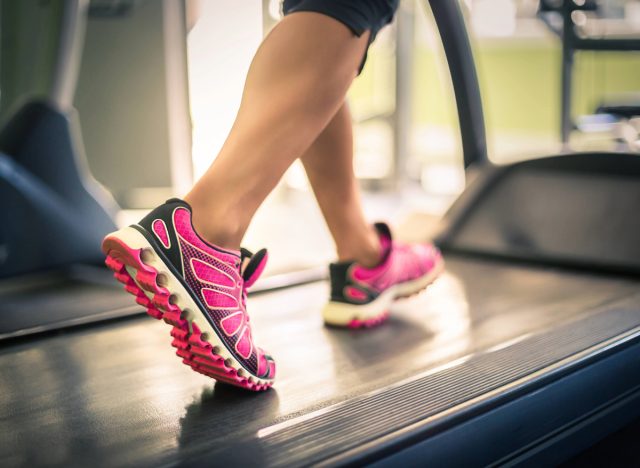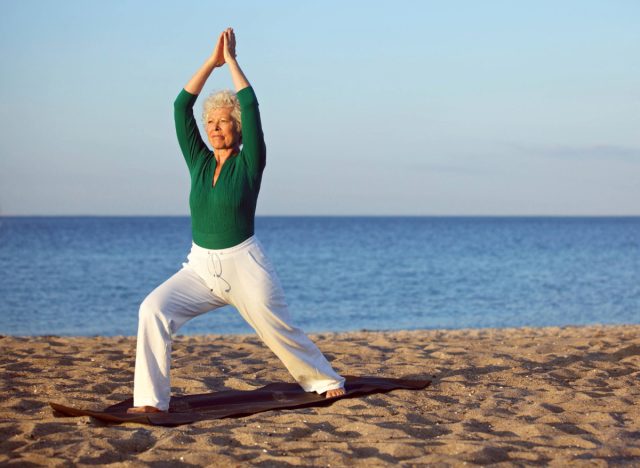Walking, often overlooked in the realm of high-intensity workouts and rigorous exercise routines, has emerged as a surprisingly powerful tool in combating chronic inflammation—a condition increasingly recognized as a precursor to severe health issues like heart disease, diabetes, arthritis, obesity, and cancer. But how much walking is needed to decrease inflammation and make a significant difference? The answer isn’t as clear-cut as one might hope.
Just as a tailored diet works better than a one-size-fits-all approach, the optimal amount of walking varies widely from person to person. It depends on your health status, fitness level, and underlying medical conditions.
Let’s dive into the science behind walking’s impact on inflammation and examine the nuances of how much you should walk to reap its anti-inflammatory benefits. We’ll break down the latest research, share insights from health experts, and offer practical guidelines to help you find the right balance. Whether you’re a seasoned walker or just starting out, understanding these variables can help you tailor a walking regimen that fits your unique needs and enables you to achieve a healthier, inflammation-reduced life.
The Link Between Walking and Inflammation Reduction


Walking, especially at a moderate intensity, has been shown to have anti-inflammatory effects on the body. Research suggests that as little as 20 minutes of walking can reduce inflammation. Additionally, walking helps improve circulation and lymphatic drainage, delivering oxygen and nutrients to tissues while helping to eliminate waste and toxins from the body. Regular walking also contributes to reducing body fat, which is known to drive inflammation.
How Much Walking Should You Aim For?


While there is no one-size-fits-all answer, experts often recommend aiming for 30 minutes of walking daily, five days per week. This is consistent with the Centers for Disease Control and Prevention’s guidelines for moderate physical activity.
For those new to walking, starting with shorter, less intense walks and gradually building up to this goal can prevent overexertion and reduce the risk of increasing inflammation from overtraining. If you find it challenging to commit to 30 minutes at a time, breaking it into shorter sessions—such as two 15-minute walks—can still provide significant benefits.
How to Get the Most Out of Your Walking Routine


Consistency is paramount to maximizing the anti-inflammatory benefits of walking. Regular, moderate-intensity walks are more effective at managing inflammation than occasional, intense exercise.
As health guidelines recommend, aim for at least 150 minutes of moderate-intensity walking per week to ensure you get the most out of your routine. Breaking this into daily or frequent shorter walks can also be effective, making it easier to fit into a busy schedule and maintain a steady routine.
Beyond just the frequency and duration of your walks, how you integrate walking into your daily life can further amplify its benefits. For instance, using walking as a break during work or incorporating it into your commute can help you stay consistent without needing extra time. Complementing your walking routine with other healthy lifestyle practices, such as proper nutrition, hydration, and adequate sleep, can enhance its effects. Sleep and stress management are crucial as both can significantly influence inflammation levels. Ensuring you get quality sleep and managing stress through activities like walking can work synergistically to lower inflammation.
Another effective way to boost the anti-inflammatory impact of your walking routine is to take your walks outdoors. Walking in nature provides a change of scenery and helps reduce stress and improve mood. Exposure to natural environments has been shown to decrease cortisol levels, a hormone linked to stress and inflammation. Furthermore, the varied terrain and fresh air can make your walks more enjoyable and engaging, increasing the likelihood of sticking with your routine.
When Walking Isn’t Enough: Other Low-Impact Exercises to Consider


While walking is an excellent way to reduce inflammation, incorporating other forms of low-impact exercise can provide additional benefits. Activities such as swimming, tai chi, and yoga can help keep inflammation at bay by promoting circulation and flexibility without putting excessive strain on the joints. Combining these with a regular walking routine can offer a well-rounded approach to managing inflammation.
By walking regularly, at a pace and duration suited to your individual needs, you can harness its anti-inflammatory power and improve your overall health. However, other lifestyle factors such as diet, sleep, and stress management are equally crucial in combating chronic inflammation.










